JANUARY IS A cinematic dumping ground: the landfill of cinema. A film sentenced to January is a film in which the studio has no faith; it’s released after the Oscar eligibility cut-off date for the previous year, and is surrounded by Oscar-contenders which are put into wide release after their limited openings dates in December. Basically, Hollywood doesn’t know what to do with these movies. Most of them are just poop. (With few exceptions.)
But I have a treat for you. January is devoted to all the bizarre, wonderful, and hard-to-classify films that fall into a nether-world: horror by default. There’s not a bad film among them. Some are outright masterpieces. And some are so bizarre you can’t turn away from the screen. There are a few conventional films and others highly imperfect but with moments of horror glory.
Teeth (2007) – As the tagline for this movie proudly proclaims, “Every rose has its thorns.” The biting irony of this screenplay may be more satisfying to female horror fans than to the teenage boy demographic so many horror films appeal to.
Jess Weixler gives an honest and refreshingly restrained performance as a Christian, high-school girl who has taken a purity vow: no sex until marriage. When she is sexually assaulted by her boyfriend, she discovers that she has a very special physical adaptation which causes horror to all her potential boyfriends and to those who would abuse her sexual innocence.
Teeth nips away at the generic horror film formula but isn’t quite sure what it wants to be. Teetering between satire and the director’s penchant for blood, Teeth lives in a kind of no-man’s land. Do we laugh or wince? The first shock is wince-inducing but then Teeth takes its time getting to the main course – gnawing away at our expectations until it finally turns lurid. But Ms. Weixler GETS it. She guides us through the film as we follow her character’s emotional deliverance.
Fine writing and character development save this movie from its nebulous tone and I must say – even as a man – I did love the final frames with their winking satisfaction. This is definitely NOT a date movie. And not really a movie for boys who cherish their boy-parts.
SHOULD I SEE IT? No spoilers. Just watch it. It’s nuts.
~~~
Kissed (1996) stars Molly Parker (from Deadwood) in a solemn and lovely performance as Sandra whose slow awakening to necrophilia is the center of the film. Strange without being lurid, Kissed examines Sandra’s experiences with death, from childhood to maturity – those experiences have never involved fear or sadness, only fascination.
While studying to be a mortician, Sandra takes a job at a funeral parlor where she is able to fulfill her need to commune with the dead. Lynne Stopkewich directs this film with acute sensitivity. Things that could have been silly or grotesque seem transcendent; Sandra speaks of her experiences in terms of spiritual understanding. And Stopkewich films Sandra’s encounters, often accompanied by poetic narration (spoken beautifully by Parker), with a delicate touch.
By the end of the film, Sandra’s honesty is so convincing you may actually believe she has a point. Peter Outerbridge as her lover suffers and accepts his girlfriend’s compulsion, so in love he is willing to do anything to get the spiritual fulfillment Sandra only shares with the dead. And the uniquely beautiful Molly Parker should be applauded for her brave performance. This is a real find – an excellent film from a fruitful time in independent cinema.
I include Kissed in My Year of Horror because the subject matter is one that produces the revulsion Stephen King speaks of in Danse Macabre. This gem of a film maintains a balance of sweet, luminous, funny and grotesque – not for everyone but it is a fascinating and unusual portrait.
SHOULD I SEE IT? Yes, especially if you’ve got a thing for corpses.
~~~
The Exorcist III (1990) has legions of cult fans, though its imperfect story-telling and outlandish directorial choices put it, at times, on the edge of camp. William Peter Blatty directed and adapted his own Legion, a sequel to The Exorcist, published in 1983. The 1977 Hollywood sequel, Exorcist II: The Heretic, directed by John Boorman, is laughably bad at times and dull as drying paint at others. Blatty had no hand in it. His sequel is far better and vastly different in tone from the first film, chronologically following as if Boorman’s film never existed. Blatty takes a few secondary characters from The Exorcist and puts them in a new situation involving a resurrected serial killer, a re-animated corpse, and temporary possession of multiple, unlikely characters.
George C. Scott plays Lt. William Kinderman (Lee J. Cobb in the first film) who finds himself on the trail of a long-dead serial killer (who eventually takes the form of Brad Dourif, natch.) Convinced that The Gemini Killer is on the loose again, Kinderman must solve the mystery of this resurrected madman in order to stop the brutal murders, none of which are seen on camera.
Blatty does some amazing things with the screenplay, giving us comic exchanges between Kinderman and Father Dyer (Damian Karras’ best friend from the first film), played by Ed Flanders, as well as a peculiar subset of supporting characters, including an incredibly unprofessional nurse (Nancy Fish delightfully hamming it up) at the local hospital. The supporting cast is a who’s-who of respected actors. Viveca Lindfors (Creepshow) makes an all-too-brief appearance toward the end of the film in a tense scene which puts Kinderman’s family in danger. Zohra Lampert of Let’s Scare Jessica to Death is very good in a supporting role as Mary Kinderman. Nicol Williamson is exorcist Father Morning. Then there’s the unmistakable voice of Colleen Dewhurst (replacing Mercedes McCambridge) as the demon…
But it is the boldness of Blatty’s directorial choices which makes me wish he had made more films. A few of his risks succeed beautifully while others go over the top. The plot gets convoluted and there are some questionable scenes, including a confused face-off with the killer / demon (reportedly added at the insistence of studio execs in an attempt to make more of a connection to the first film, despite Blatty’s objections). There are also some decidedly unclear supernatural rules (vital to helping us suspend disbelief in a film of this kind) which may or may not be a result of the interpolated scene. Blatty has said he is largely satisfied with the released version but would like to re-cut it without studio interference. Unfortunately, much of the footage has been destroyed.
These problems don’t spoil the cumulative effect of The Exorcist III. It contains one of the most terrifying jump scares I have ever seen on film: a plot-related shock for which Blatty perfectly disarms us then attacks confidently with music, camera and image. I’ll admit – it got me the first time around and still gives me a thrill every time. And there are images that will stay with you for a long time. Nightmarish and wonderfully weird.
SHOULD I SEE IT? Yes. Make preparations for jump scares.
~~~
The Skin I Live In (2011) is what a horror film looks like in Pedro Almodóvar’s hands. Though several of his previous films have dealt with suspense, obsession and murder, this one is a creeper, drawing inspiration from the French horror classic, Eyes Without a Face and based on Thierry Jonquet’s 1984 novel, Mygale (published in English as Tarantula).
In Almodóvar’s free adaptation of that novel, Dr. Robert Ledgard (Antonio Banderas) keeps Vera (Elena Anaya) prisoner as he attempts to create an impermeable, synthetic skin that will keep her safe from all harm. Marisa Paredes (an Almodóvar regular) plays his housekeeper/assistant (a parallel to the Alida Valli role in Eyes Without a Face). Jan Cornet figures into the story as Vincente, a young man who rapes Ledgard’s daughter, which leads to her suicide and unleashes Ledgard’s madness. Almodóvar follows the lives of Vincente and Vera until their stories meet in a terrible way.
As usual, the master director conjures beautiful performances from every member of his cast. Banderas has been wasted in American cinema but gives one of the best performances of his career in The Skin I Live In: brutal, cold, occasionally vulnerable and completely fascinating. Cornet, Paredes and Anaya couldn’t be better in their roles and, I must add, Anaya and Cornet, in all their youthful beauty, are exquisite to look at.
Like all the films this month, giving away this one’s secrets would be criminal. The violence is sometimes subversive and sometimes blatant but it is never gratuitous. There are not one but two rapes, both of which are essential to the themes of identity and masculine vs. feminine power. It’s a brilliant film, which opened to unfortunately mixed reviews in 2011. Almodóvar is trying something new here, while still working with his old techniques – it’s an excellent juxtaposition and the movie is absolutely compelling.
SHOULD I SEE IT? Yes. Blocking all entrances to your epidermis.
~~~
Freaks (1932) is one of those movies that seems daring even by today’s standards but was downright controversial in its initial release, effectively ending the career of its then-famous director, Tod Browning. Browning had been a popular director at the time, with successes in the Lon Chaney vehicle, The Unholy Three, and the atmospheric classic Dracula with Bela Lugosi. He made only four more films after the controversy of Freaks, two of them uncredited.
Browning, in his film about circus performers, cast real-life sideshow performers – many of whom had physical deformities. Following their everyday lives and portraying them as multi-dimensional, loyal, good-hearted people did little to reduce the shock of seeing their handicaps so clearly onscreen. Daisy and Violet Hilton, conjoined twins familiar to theatre audiences because of the musical Side Show, are featured in the film among such performers as the Armless Girl (Frances O’Connor), The Living Torso (Prince Randian) and Pinhead sisters Elvira & Jenny Lee Snow.
The plot concerns Cleopatra (Olga Baclanova) the trapeze artist and her strong-man lover, Hercules (Henry Victor) who scheme to murder Hans the midget (Harry Earles) for his large inheritance. When the “freaks” find out that one of their own has been duped, they set out for revenge. A long, terrifying sequence of the performers’ pursuit of Cleopatra and Hercules during a vicious thunderstorm is the film’s centerpiece, masterfully directed.
It’s hard to say exactly what caused so much controversy in 1932 – the pre-code era when Hollywood films were not bound by moral stricture. One woman’s complaint that the film caused her to have a miscarriage may have been hyperbole but there is no doubt the film was a commercial failure. In the original test screenings, Hercules was castrated by the “freaks” and shown singing in falsetto at the end of the film. The studio made extensive cuts to soften the film’s shock-value but, despite losing most of the upsetting footage, Freaks was banned in the UK for 30 years. It has since been restored by the United States National Film Registry which deemed it “culturally, historically, or aesthetically significant.”
Even by today’s standards, I find the film’s climax haunting. Browning’s skill amplifies the horror. Even though the cast was mostly comprised of inexperienced actors, burdening the film with stilted line-readings, they are committed to the story and several of the sideshow performers seem remarkably at-ease on camera. It’s a provocative and persuasive film in which our unlikely heroes become nightmare – yet we root for them. It may seem exploitative when seen through the lens of contemporary political correctness – using “freakish” physical differences to play on our fears of “the other,” but there is never any doubt about whose side we are on – even as the sideshow family pursues their villainous victims.
SHOULD I SEE IT? Time to get freaky, yo!
~~~
Let the Right One In (2008) / Let Me In (2010) is a coming-of-age story with a horror backdrop – but not made for the kiddies. A lot of ink (and computer power) has been consumed comparing the American remake (Let Me In) to its Swedish predecessor (Let the Right One In). I like both versions very much and for different ways. Each also has weaknesses, starting with the title of the American version. I prefer the objective sound of “Let the Right One In” which matches that film’s distant perspective.
If you have neither seen nor heard of the film, it would be unfair for me to give away the key plot point which, when I saw it, was a surprise, though I had suspected it early on. A twelve-year-old boy (Oscar in Sweden, Owen in America) is befriended by his mysterious new neighbor, a teenage girl named Eli (or Abby, depending on which version you are watching) who moves into the apartment next door with an adult man who seems to be her guardian. Oscar/Owen, the scapegoat for the school bullies, begins to come into his own through his friendship with Eli/Abby. But a series of murders in the town, committed by Eli/Abby’s companion, begins to encroach on their tenuous relationship: the film opens as the companion murders a high-school boy in the woods, draining his blood into a plastic jug.
Little by little we learn more about this mysterious new girl and the relationship with her companion. We also see glimpses of the townsfolk who figure into the story. The Swedish film develops these characters to little payoff. The American version nearly eliminates the adults from the story – settling on Rear Window-esque snapshots instead. The focus shifts to Abby and Owen, streamlining the story and adding momentum. Its credibility is weakened, however, by obvious CGI effects.
Performances by the young cast in both films are terrific. Tough I prefer Lina Leandersson in the Swedish film, with her peculiar, androgynous looks, Chloë Grace Moretz in the same role in the American film does a fine job though she seems too much like a regular (albeit petulant) little girl. The American version has the benefit of the exceptional Richard Jenkins as Abby’s companion.
No matter which version you watch, the ending sucker-punches you with a satisfying, grim sequence that will have you cheering while questioning your own morals. Its denouement is full of anticipatory sorrow, leaving you to ruminate over the pain of growing up, growing old, and the loss of youthful dreams.
SHOULD I SEE IT? Yes. Both of them. The end.
~~~
Possession (1981) is what you would get if you cross-bred Lynch, Dali, Cronenberg and Polanski; a hyper-imaginative film about a failing relationship that begins as a marital drama on the edge of an emotional cliff, takes a dive into the horrors of Lovecraft and lands in a series of surreal tableau. This is, without a doubt, one of the trippiest films you will ever see – more like like a painting than a film, it’s narrative less important than reaching your subconscious.
(BTW – this film has nothing to do with Neil LaBute’s 2002 film of A.S. Byatt’s 1990 novel.)
Sam Neill and Isabelle Adjani, in all their youthful beauty and vigor, commit fully to roles in which they are asked to play everything from tender sadness to overwrought madness. Made when director Andrzej Zulawski was going through what must have been one doozy of a breakup, Possession asks us to step into his nightmare. But don’t watch this film if you are looking for a clear story. This is about the horrors of love gone wrong, the damage we do to ourselves and the monsters we create. (It shares some of its themes with David Cronenberg’s The Brood.)
Mark and Anna, who are in the midst of a painful break-up as the film begins, continue through an unhealthy attempt to stay together. When Anna moves out to get her own apartment, she has a horrific fit in the tunnels of the subway, eventually skirting a fiendish secret away to her flat. (That scene was surely responsible for Adjani’s Cesar Award and Cannes Best Actress prize!) Mark, meanwhile, meets their son’s teacher, Anna’s doppelganger, also played by Adjani. When the nature of Anna’s secret comes clear, the movie just gets crazier.
It’s been mentioned in the same analyses as von Trier’s Antichrist but where that film was sadistic in von Trier’s usual way, this one is vulnerable and exposed, like a wound which will not scab over. Trippy. Mad. Unmissable.
SHOULD I SEE IT? After a hit of acid.
~~~
Audition (1999) – Takashi Miike, whose other films include the supremely violent Ichi the Killer and 13 Assassins, gives us a tale of love gone mad even more nightmarish than Fatal Attraction.
Widower Shigeharu Aoyama (Ryo Ishibashi) seeks a new wife and, with the help of his film-maker friend, holds auditions for the perfect girl. When he finds Asami (Eihi Shiina), a delicately beautiful girl in the traditional Japanese mold, the movie goes dark.
Have I said too much already? Possibly. But this movie doesn’t play out in ways you might expect and the performances by Shiina and Ishibashi help us believe in this film’s transition from romance to horror. Though strange things begin to happen, it isn’t until a certain phone call 1/3 of the way into the film that we know this will take a baaaaaaaaad turn. (That, and Miike being the director, I suppose.)
A victim in a canvas bag, human vomit served in a doggie bowl, a severed tongue, a legless dance teacher, piano wire, poison and acupuncture needles are this film’s tools. But it isn’t until the climax that we witness any violence. By then, the tension has been ratcheted up so high that the final 20 minutes are almost too much to take. Holy crap this is a good movie!!! Real horror.
By now you know I’m a fan of the slow build – especially when the payoff is so good.
SHOULD I SEE IT? As long as you don’t have an acupuncture appointment anytime soon.
~~~
Silence Of The Lambs (1991) goes into this category because, like Let the Right One In, the horror elements are only the stage on which its psychological drama unfolds.
There are films and plays whose dialogue is so extraordinary that memorable quotes live almost independent of their context. Silence of the Lambs gives us more than enough tasty morsels to satisfy. Paired with Anthony Hopkins’ sinister and gleeful performance as the mad genius, Hannibal Lecter, the dialogue chills and tickles all at once. Plot, character, relationship and theme combine to make Silence a classic despite its unique resistance to categorization.
The story is a familiar one – and we’ve seen variations of it in any number of derivative films in the 22 years since Silence was released. An investigator (Jodie Foster as Clarice) seeks help from a serial killer to catch another madman. Buffalo Bill skins his female victims, using their flesh for a purpose revealed halfway through the movie. The film is a race to save the abducted daughter of an American senator from Bill’s clutches. Clarice is sent by her FBI mentor, Jack Crawford (Scott Glenn), to question Hannibal Lecter who may be able to help.
Forgive me for oversimplifying the complexities of relationship and motivation which make Silence so gripping.
“Hannibal the Cannibal,” so-called because of the gourmet feasts in which he has enjoyed human offal, offers Clarice a “quid pro quo” deal. He will provide information about Buffalo Bill if she will answer questions about herself. Clarice agrees, despite the knowledge that it will put her in murky waters. The arrangement chains Hannibal and Clarice together in a bizarre parent/child relationship that parallels her relationship with her own, deceased father and Jack Crawford, the Agent-in-Charge of the Behavioral Science Unit of the FBI. Setting these relationships against each other draws a clearer picture of Clarice and her needs without Jodi Foster’s ever having to speak them aloud… until Lecter in their climactic scene roots out the origin of Clarice’s needs in the slaughter of the spring lambs …
Aside from crazy-good dialogue and the astounding performances of its two leads, Silence has more to recommend it than I can fit in these few paragraphs. And it’s even better on repeated viewings. Those who haven’t seen it will be thoroughly hooked by the film’s suspenseful plot and those who have seen it will relish dialogue they missed the first (or second or third) time around, as well as Demme’s subtle but careful direction. There are dozens of hypnotic close-ups and note how little we see Hopkins actually blink. Most of his blinks were removed in editing to keep his gaze fixed. This is one of the ways in which Demme unnerves us.
This is a film about psychological scars, about women in a man’s world, about relationships in many forms, and about the need to connect. It’s also about madness, horror and the blurred lines between insanity and reason.
SHOULD I SEE IT? You mean you haven’t yet??? What’s wrong with you?!?!

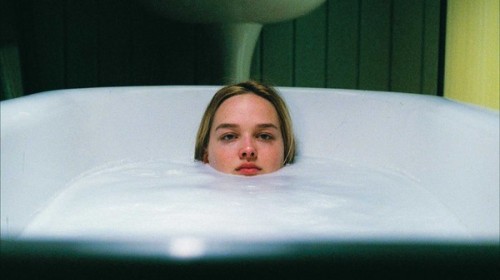
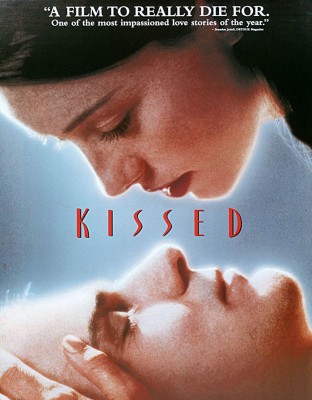
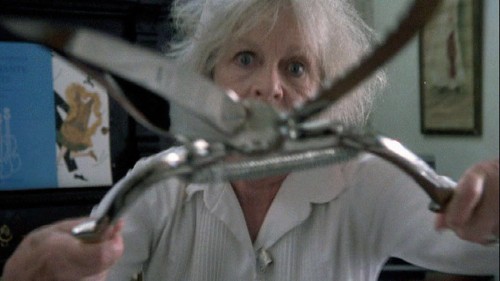
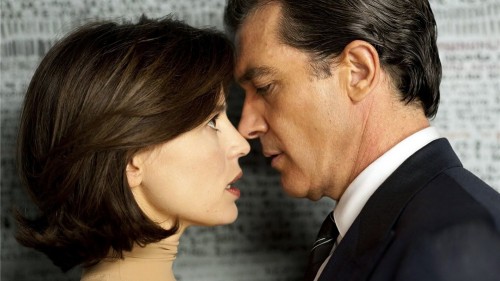
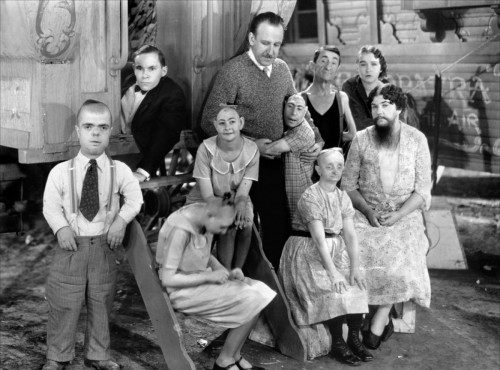
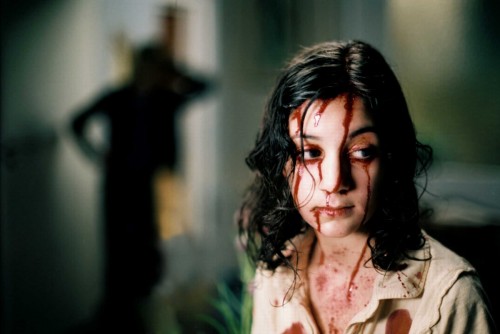
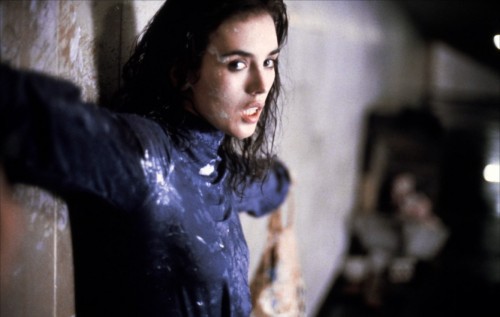
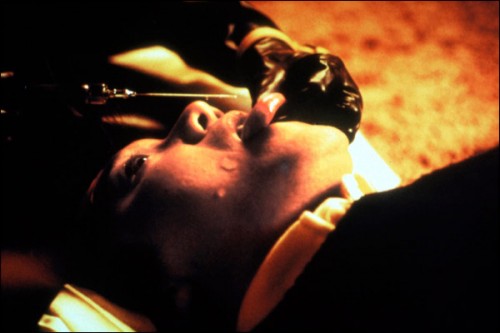
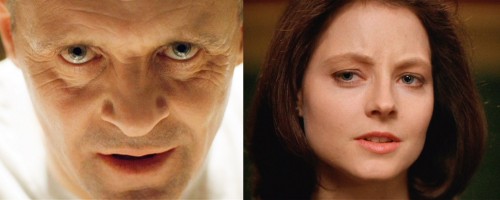


Korea is believed to be the second country that acupuncture spread to outside of China. Within Korea there is a legend that acupuncture was developed by the legendary emperor Dangun though it is more likely to have been brought into Korea from a Chinese colonial prefecture.